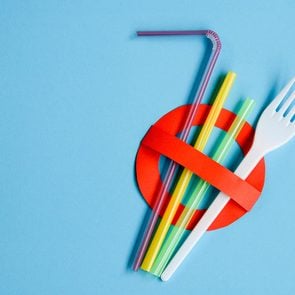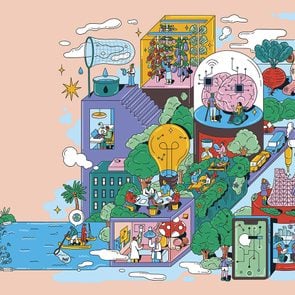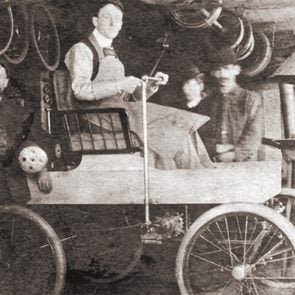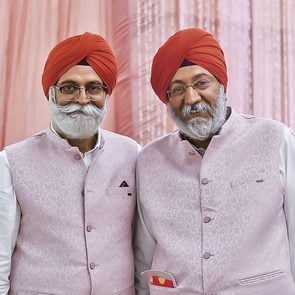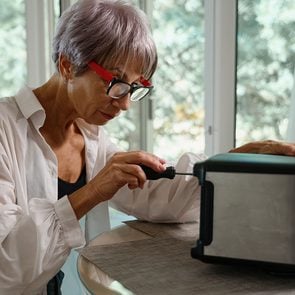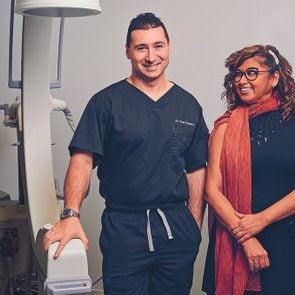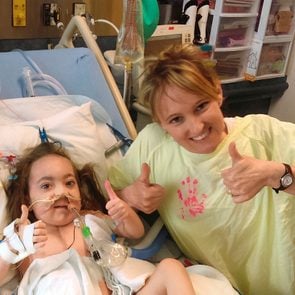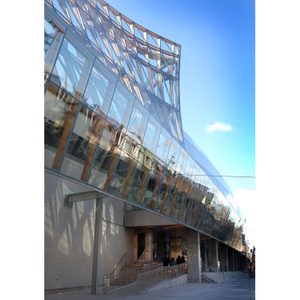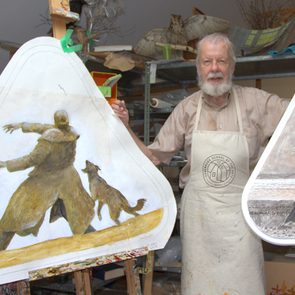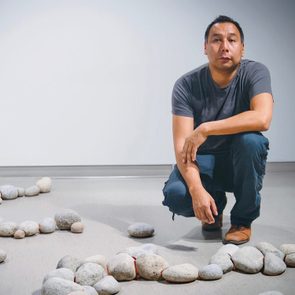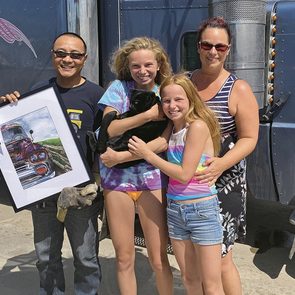Being diagnosed with a medical condition can be difficult to cope with, but for those diagnosed with amyotrophic lateral sclerosis (ALS), it is life-altering. Yet, Mike Cels, who was diagnosed with ALS at the age of 53, continues to face each day with an inspiring sense of positivity. With the support of his wife, Carmen, and their two children, Mike takes on each new challenge as a learning opportunity and finds ways to adapt to the realities of living with the disease.
ALS is a rare, neurological disease that attacks the nerve cells that control the muscles of the body, leading to progressive weakness and disability.1 Because early symptoms may mimic those of more common conditions, it takes an average of 21 months to receive an ALS diagnosis in Canada. In most cases, by the time it is discovered, the disease would have already progressed.2 An estimated 4,000 Canadians are living with ALS. Each year, approximately 1,000 Canadians die from ALS, the majority within two to five years of diagnosis.3
When Mike received the news of his diagnosis in 2017, it left him and his family very little time to come to terms with it. “I spent a long time in denial, buried my head in the sand. I didn’t want to accept it. The disease progressed anyway, and I just lost precious time,” Mike explains.
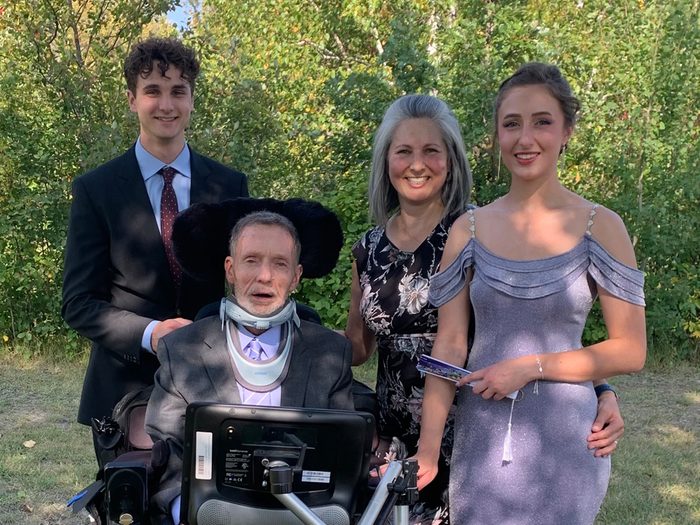
But Carmen sprang into action almost immediately. “I went straight into research mode,” she recalls, “What does this mean? What are we going to have to plan for?”
According to Carmen, Mike’s disease progressed slower than many, starting with losing the ability to walk and talk, and eventually difficulty swallowing and breathing. There were no sudden declines that needed urgent attention.
“This made it a little bit more manageable because we were able to see some of the signs that were coming and we had weeks or even months to get prepared,” Carmen explains.
But one thing the family couldn’t see coming was a global pandemic. When COVID-19 sent the world into lockdown, Mike’s care was severely impacted.
“It became impossible for me to work, or even to work from home and be the primary caregiver, as Mike’s needs were increasing. There was a shortage of nurses, and personal support workers were not offering in-home services,” Carmen says, explaining that this also took a toll on her mental health.
But what made the pandemic even more frightening was when the entire family tested positive. “The vaccines were not out yet, so it was a little scary knowing it was a respiratory illness and I had significant lung function loss,” Mike recalls.
Fortunately, the family recovered and took every precaution to stay safe, such as ensuring support workers coming into their home wore masks and other personal protective wear.
“The pandemic also robbed us of some travel that we wouldn’t be able to do today,” says Carmen.
Now that Mike relies on several types of equipment such as a wheelchair for mobility, travelling is a lot more challenging. “Every step of every day requires planning, appropriate packing of all the different kinds of devices and equipment and supplies that we need,” Carmen explains.
Nevertheless, the Cels are determined to make the most of time and celebrate milestones, no matter how big or small. Despite it being a huge logistical undertaking, Mike was able to travel across Canada to attend a family wedding in Winnipeg and did not miss out on the proud moment of seeing his son graduate last year.
However, some aspects of the disease were more difficult to grapple with.
“One of the most difficult times along this journey has been when Mike’s speech was becoming increasingly difficult to understand. Physical mobility is one thing to have to deal with, but the inability to communicate is completely another level of loss,” says Carmen.
Today, Mike uses eye-gaze technology to communicate, where a camera attached to his communication device follows his eye movement to select and read out pre-programmed text.4
“Since the disease doesn’t stop progressing, we have to learn new approaches and teach them to my support team. This takes time and energy, both things which are in short supply due to ALS,” Mike says.
Despite it all, the family remains positive. “With Mike having lived for more than six years, holistically he’s done very well and it’s a very positive situation in the face of the diagnosis,” Carmen notes.
Knowing that it takes a community to support those affected by ALS, Mike and Carmen are raising awareness about ALS as well as resources and support available to those affected by the disease, through sharing their story.
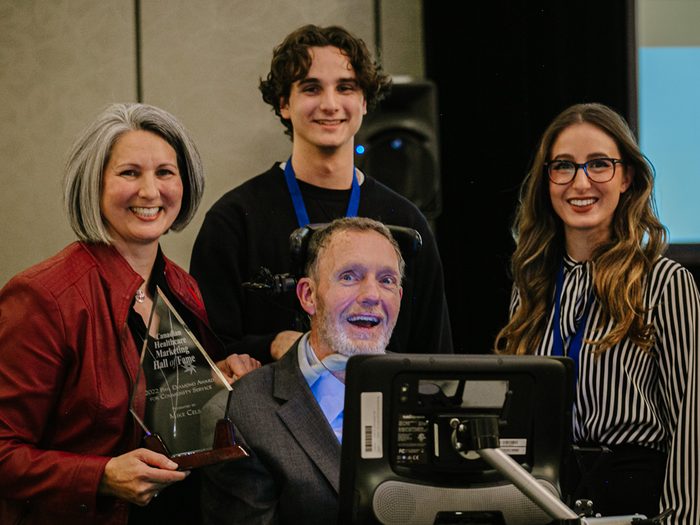
Over the years, the Cels relied on the ALS Society of Canada for support through Mike’s journey and as a reputable source of information. They have since been active partners with the organization, contributing to the meaningful work it does.
Even before his diagnosis, Mike was an advocate for increased access to treatment for Canadians living with different medical conditions.
In recognition of his advocacy work, he was inducted into the Canadian Healthcare Marketing Hall of Fame. Mike’s active role in the ALS community also earned him the special recognition of the Phil Diamond Award, a proud moment for the Cels family.
“We still participate in as many projects and events as possible and do our best to be there. We can’t always participate due to Mike’s increasingly complex care schedule, but we always discuss if we could and what would it take,” Carmen says.
For persons recently diagnosed with ALS, Mike and Carmen recommend knowing what resources are available, finding a strong support system, and seeking help early.
“Based on my own experience, I would encourage new patients and their families to not wait for anything from renovations to travel to anything else,” Mike encourages.
For more information on how to navigate your ALS diagnosis and living with the condition, please visit www.alspathways.ca, which features interviews and personal stories from those impacted by ALS: patients, caregivers, and healthcare professionals.
[1] ALS Pathways. Canada: ALS Overview; c2023. Accessed on January 17, 2023. What is ALS? Available from: https://www.alspathways.ca/als-overview/
[2] Richards D, Morren JA, Pioro EP. Time to diagnosis and factors affecting diagnostic delay in amyotrophic lateral sclerosis. J Neurol Sci. 2020;417:117054. https://doi.org/10.1016/j.jns.2020.117054.
[3] ALS Canada. Canada. About ALS; c2020. Accessed on January 17, 2024. ALS Figures. Available from: https://als.ca/what-is-als/about-als/
[4] CENMAC. Assistive Technology in Education. United States. Eye Gaze Technology; c2024. Access on January 17, 2024. What is Eye-Gaze? Available from: https://cenmac.com/resources/eye-gaze/
The April 2024 print edition of Reader’s Digest Canada was its last. Founded in 1947, 25 years after the original U.S. publication, Reader’s Digest Canada brought a focus to Canadian stories and became a national treasure for more than 70 years. Its readers were incredibly loyal. So while the website will no longer be updated and newsletters no longer sent, we will leave you with some words from readers themselves that we ran in the final print edition. Thank you for being a part of this incredible journey.
“I will be very sad to see the Canadian edition of Reader’s Digest discontinued. The summer my mother died, I was shipped off to live with an aunt and uncle. They were very nice people but I was away from the familiarity of my own neighbourhood and friends. Their children were much younger than me, so I felt totally alone.
Then I discovered in their basement many boxes of an unfamiliar magazine called Reader’s Digest. As I was bored and lonely, I got permission (as a voracious reader) to “peruse” these magazines. I was hooked and would read them from cover to cover. They were marvelous and as soon as I returned to my home, I asked my father to get me a subscription.
Even after marrying and then moving to the United States and back, my subscription followed me. My son had no interest in reading. I showed him my monthly arrival and pointed out sports stories or humorous articles and jokes for him to read. Eventually it was a race to see which one of us would grab the latest issue first. He would then read it cover to cover. And he is now an enthusiastic reader like me. So I will miss my monthly magazine as it truly did shape my life and my son’s.”
— BRENDA GRAVES
“The annual holiday issue is always my favourite and I look forward to it each year. This year’s Dec. 2023/Jan. 2024 issue didn’t disappoint. Each story left me with tears, smiles and moments of reflection. Thanks so much for being a part of our family for all these years. I must say it will be a sad day when I receive the last edition.”
— DOUGLAS WOODS, Napanee, Ont.
“I just want you to know how sad I will be when you cease to publish the Canadian edition of Reader’s Digest. We have been receiving the monthly magazine since we were married in 1965, and it was also in my childhood home for many years. It has provided us with so much information we might never have seen anywhere else. It is a staple in our home for everyone to read! Thank you for the many, many years of enjoyment reading the magazine.”
— ARLENE GRAVES
“My mother has gifted me a subscription to your English magazine for almost 30 years. I enjoy the Canadian content, stories and humour in the perfectly sized magazine that I can tote around and read any time. I have always appreciated the health-related articles, and found them stimulating and informative. Reader’s Digest has allowed me to connect with the rest of Canada.”
— MARIE COYEA, Saint-Augustin-de-Desmaures, Que.
“I’m saddened to hear that the Canadian edition of Reader’s Digest will no longer be published. It’s been a joy in our house my whole life! It’s been one of my mother’s Christmas presents for years. We’ll both miss it dearly. Thank you for the inspiring stories, the useful tips, and of course, the laughter. I will treasure my old copies of Reader’s Digest forever.”
— ANITA RAMSKI
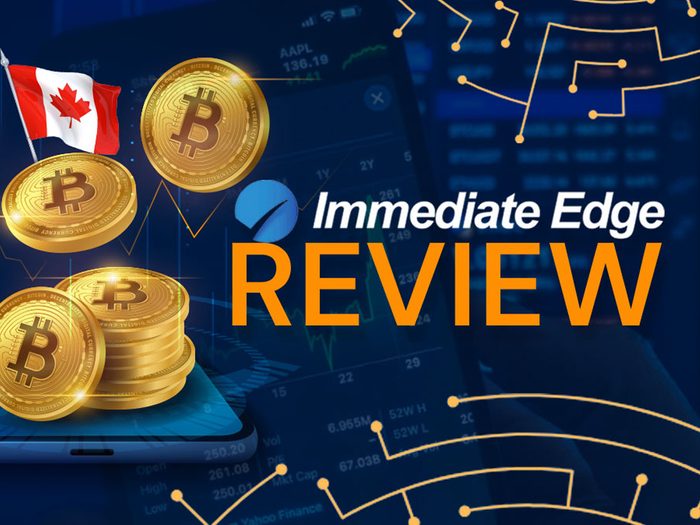
Is Immediate Edge legit and safe to use in Canada?
We at Leanback Player actually tried the trading software to test its legitimacy and address some of the claims found online. And in our in-depth Immediate Edge review, we’re confident we can answer all of your pressing questions.
So, right out of the gate: Yes, it is a valid trading software. But there’s more to it than just a one-line summary. We’ve prepared a full review below – and we also have some tips on how to use it!
DISCLAIMER: The information provided in this article is for educational purposes only. We at Leanback Player do not offer financial advice and brokerage services nor recommend readers to buy or sell cryptocurrencies, stocks, or securities. Online trading is risky, so make sure to approach it with caution.
Immediate Edge Overview in Canada
- Our rating: 4.85/5
- Free Demo Trading Account: Yes
- Minimum Deposit: $250
- Trading Fees: None
- Account Fees: None
- Transaction Fees: 2% commission
- Supported Cryptocurrencies: LTC, XRP, BTC, ETH & More
- Advertised Success Rate: 87%
- Available in: Canada
Immediate Edge Pros & Cons
Pros:
- Demo account available
- No account or trading fees
- 24-hour withdrawal period
- 87% success rate
- 4000:1 leverage
- 24/7 customer support
Cons:
- Limited in some locations
- Higher minimum deposit
Disclaimer: This review is specifically focused on Immediate Edge, a cryptocurrency trading bot available for users in Canada. Please be aware that the features, services, and capabilities of Immediate Edge discussed in this review are relevant only to Canadian traders.
>> Trade cryptos with 4000:1 leverage at Immediate Edge
What Is Immediate Edge?
Immediate Edge is a trading bot that uses smart AI and detailed algorithms to help users trade – simple, right?
It also supports CFDs, meaning that you can trade a variety of assets, such as cryptocurrencies, stocks, FX, and even hard and soft commodities!
How Does Immediate Edge Work in Canada?
To make things easier, let’s take a look at Immediate Edge in action:
Say that there’s a recent movement in the market, and you are asleep. Well, there’s not much you can do, right? Wrong!
You can leave the Immediate Edge on overnight – it will analyze the market for you, and whenever there’s an opportunity to buy, it will open the buy order for you.
It’s especially useful in volatile markets like crypto trading – the price of digital coins is constantly changing, so finding the lowest points for buying is very difficult on your own.
Or, on the flip side, when a price increase is expected, the software responds by placing a sell order – you would not want to miss the next late 2023-like surge in crypto prices.
And don’t worry; you get to set all the limits and goals to make sure you don’t sell or buy at undesirable prices.
Immediate Edge claims an effectiveness rate of 87%, which is quite impressive.
>> Trade cryptocurrencies at Immediate Edge
Who Can Use Immediate Edge Platform?
Anyone with basic computer skills and an internet connection can use Immediate Edge.
For newcomers, it provides simple settings to manage risks, like ‘stop-loss’ and ‘take-profit’ levels, which are crucial when learning how to trade without much prior knowledge. And even if you are an experienced trader, make sure these tools – they can be a lot of help.
Prefer placing orders on your own? We get it; sometimes you want to have the final say – you can do that with Immediate Edge, too. Simply change the settings and task the AI to do research and analysis only and take care of the buy/sell orders yourself.
And if you also want to play around the charts a little bit, there are dedicated technical indicators available for the Immediate Edge users. These can be very useful for technical analysis, so make sure to consider them when trading.
Immediate Edge Trading Review: Key Features in Canada

After using the Immediate Edge website for a while, we noticed a few key features that make it stand out from other trading platforms and crypto trading bots.
Let’s take a closer look.
Immediate Edge Trading Strategy
Immediate Edge is designed to perform trades with remarkable speed. Specifically, it uses High-Frequency Trading (HFT) strategies powered by advanced algorithms.
The trading platform is capable of swiftly executing hundreds of transactions each minute, making the most of arbitrage chances when there’s a difference in the price of a cryptocurrency on various exchanges – and in the crypto market, this happens quite often.
Diverse Asset Trading
Immediate Edge users will be happy to know that they can access classic markets like stocks and Forex, as well as crypto, commodities, and more.
Enhanced Security Protocols
Immediate Edge takes security seriously – and this is probably one of the biggest advantages of the app.
They put up several defensive strategies to keep user data safe at all times.
The defensive system includes strong firewalls to block any unauthorized access, SSL encryption to ensure data is transmitted securely, and Two-Factor Authentication (2FA) to reinforce the safety of each and every Immediate Edge account.
Multiple Payment Methods Accepted
Immediate Edge has a user-friendly banking system in place for speed and ease of use.
The platform supports an array of payment options to suit different user preferences. Immediate Edge accepts payments via Credit/Debit Cards, Bank Transfers, and Digital Wallets like PayPal and Skrill, adding to the convenience for its users.
Free Demo Account Available
Immediate Edge provides a demo account feature that allows users to familiarize themselves with the platform by conducting trades with virtual money without any real-world financial risks.
It’s a great option if you are not sure if the app is right for you. Simply take a look at its demo version and get used to the way it feels – you can switch to a real money account whenever you are ready.
24/7 Customer Support
Immediate Edge’s customer support team is available round the clock, every day of the week, via live chat. This constant support helps to provide a seamless and safe experience, knowing that they can get help whenever needed.
0 Hidden Fees
The Immediate Edge revenue model revolves around its users making money. The platform only takes a 2% cut from the profits earned through its services. There are no hidden fees or account maintenance charges, just the 2% profits commission and the $250 minimum deposit.
This means that a small fraction of the earnings from successful trades is taken as a service charge, ensuring that the platform’s income is dependent on user success.
>> Enjoy 0 fee trading at Immediate Edge
Benefits of Using Immediate Edge Trading Platform in CA
Now that you know the Immediate Edge key features, let’s discuss the benefits of using this auto-trading software to see if it’s the right thing for you.
- 87% Accuracy: Immediate Edge claims an impressive 87% success rate in identifying profitable trades. The Immediate Edge app tirelessly monitors the global market, and this level of precision is quite exceptional, given the volatile nature of the crypto market.
- Advanced Tech Under the Hood: The Immediate Edge platform is equipped with state-of-the-art algorithms, a custom-designed OLAP cube, and a multi-dimensional data structure for performing detailed and swift analyses.Traders can benefit from rapid and accurate market data analysis to pinpoint the best trading opportunities.
- 4000:1 Leverage Crypto Trading: 4000:1 is a massive leverage – and not many trading platforms offer it. Keep in mind that it can be very risky to trade with a leverage this high. Always make sure to limit your risks when trading online, and only go with higher leverage if you are absolutely certain in your predictions.
- Only CySEC-Approved Brokers: You will not be trading with unregulated brokers if you use the Immediate Edge software. The brokers partnering with Immediate Edge are all approved by the CySEC, increasing investor protection and making the Immediate Edge system a legitimate crypto trading tool.
- Free and Easy to Use: All it takes to begin trading at Immediate Edge is a $250 minimum deposit. The site is free to use and only charges a 2% commission if you earn money, not if you lose it.
- More Than Just a Crypto Trading Platform: The Immediate Edge website goes beyond crypto. It also allows you to start trading Forex currency pairs, commodities, and a variety of financial assets.
Immediate Edge Review CA: Things to Improve
No trading platform is perfect, and that includes Immediate Edge. You may have noticed that some other Immediate Edge reviews have skipped the bad stuff, but we just can’t do that. So, here are the cons of the IE automated trading platform.
- Demo Trading Feature Only After $250 Minimum Deposit: Immediate Edge requires a minimum deposit of $250 before users can unlock the demo account. Nonetheless, it is highly recommended that you use it before you start trading for real money.
- High Leverage is Risky: The 4,000:1 Immediate Edge max leverage boosts the potential for sizable profits, obviously, but also increases potential loss. Especially for those new to trading – think twice before using it.
Review of Immediate Edge Canada: Closer Look & Rating
From registering our trading account on the Immediate Edge website to coming up with our final verdict, this is how we ranked the Immediate Edge bot.
Safety Measures: 4.85/5
Immediate Edge places a high priority on keeping your personal data secure. They use robust encryption and have placed two-factor authentication in place.
The platform also safeguards its servers across multiple locations globally. This ensures you can focus on trading, knowing your information is well-protected.
Market Variety: 4.75/5
Diving into the range of markets available at Immediate Edge is quite the adventure. They offer a wealth of options, from the world of cryptocurrencies to Forex trading, indices, and stocks; they’ve got an impressive selection at your fingertips.
Commission Rates: 4.85/5
Immediate Edge fees are straightforward and honest – they charge a consistent 2% commission on what you earn.
That’s it, no hidden costs or unpleasant shocks. It’s an approach that other trading platforms could certainly take a page from.
Banking Speed: 4.8/5
Payouts at Immediate Edge are known for being prompt, with many verified Immediate Edge reviews reporting 24 to 48-hour payout times. Compared to other auto-trading robots, this is either on par or better than the competition.
Support Services: 4.75/5
Encountering issues on Immediate Edge isn’t a dead end; their customer support is available around the clock, providing assistance whenever needed. They’re not only responsive but also thorough, which has earned them praise and a high score from users.
>> Start trading at Immediate Edge now
Immediate Edge App Alternatives for Canadian Traders
The Immediate Edge platform is not the only auto-trading software in the world. If you want to start trading using an auto bot, the best alternative to Immediate Edge, in our opinion, is Quantum AI. Let’s talk more!
Quantum AI
- Plenty of altcoins to trade
- Guaranteed no fees
- $250 minimum deposit
- CFD, Forex & other markets
Quantum AI offers many of the Immediate Edge highlights and then stands out for its focus on altcoins. With an array of around ten options for funding your account, you need to start with a minimum of $250 to get going.
What’s great about Quantum AI is that it invites you to trade without any fees, ensuring your experience remains affordable and transparent.
When you’re ready to dive in, creating an account with Quantum AI won’t cost a dime. As soon as it’s up and running, you can customize the bot’s settings to watch over specific cryptocurrencies and set your own limits for transactions.
The platform isn’t limited to digital currencies; it also includes stocks, Forex, and CFDs, serving as an all-encompassing platform suitable for all levels of trading expertise. Thanks to its cutting-edge automation, which leans on quantum computing and AI, the bot excels in predicting market movements.
If you’re just getting your feet wet in trading, Quantum AI has got your back with plenty of free educational content to help you get a handle on the ins and outs of the trading process. Plus, the platform can operate as a grid trading bot, strategically placing trades at different price levels to create a comprehensive grid of orders.
How to Sign Up for an Immediate Edge CA & Start Trading

Embarking on your trading journey with the Immediate Edge platform is a breeze. Simply follow these essential steps, and your trading account will be ready in minutes!
Step 1: Register for a New Account
- Visit the Immediate Edge site
- Click the the sign-up button from the right on the main page
- Enter your personal details
- Hit the sign-up button to proceed
- You’ll be paired with a broker that’s fully regulated by CySEC for added peace of mind
Step 2: Activate Your Immediate Edge Membership
- A confirmation email from Immediate Edge’s website will soon hit your inbox
- Click the included link to activate
- Depending on your location, you might also need to verify your mobile number
- Complete any required KYC paperwork requested by the trading platform
Step 3: Fund Your Account
- Log into your brand-new account
- Choose your preferred method to deposit funds
- Make a minimum deposit of $250
Step 4: Start Trading Online
- Go to your account
- Open the bot
- Put in your settings
- Start trading online
Immediate Edge Trading App Canada: FAQs
Can Immediate Edge be Accessed from Canada?
Absolutely, Immediate Edge is accessible in Canada, as well as across a range of international locations, including Australia.
The system offers a platform for trading a variety of digital currencies and contracts for differences (CFDs), providing a way to broaden your investment horizons.
What Are the Costs of Using Immediate Edge?
The good news is that Immediate Edge doesn’t slip in any hidden charges. They have a clear fee policy: a 2% commission on successful trades only.
So, fees apply exclusively when you turn a profit, which is an approach that has attracted positive comments in numerous user reviews. Note that the Immediate Edge minimum deposit is $250.
How Much Money Can I Make Using Immediate Edge?
The Immediate Edge trading platform claims potential daily earnings of up to $2,200.
But remember, such outcomes are variable and hinge on factors like your initial investment amount and prevailing market conditions, along with how you set up the auto-trading bots.
Is Immediate Edge a Scam?
Immediate Edge has been on the market for about five years, and it’s a real deal, not a scam. It has physical offices in three cities: Lisbon, Nicosia, and Krakow, which shows it’s an established business.
Only brokers with a CySEC license are able to partner with Immediate Edge, ensuring they’re working with regulated entities – 0 unregulated brokers on-site.
Is Immediate Edge Website Trustworthy?
Yes, through detailed examination, it’s evident that Immediate Edge is a reputable platform. Setting up an auto-trading account with them is straightforward and involves linking with CySEC-regulated brokers — no partnerships with unlicensed entities here.
What’s more, you can get a feel for the platform with a demo account before committing real funds to trade.
Is Immediate Edge Endorsed By Elon Musk?
Contrary to what you may find online, there’s no official stamp of approval from Elon Musk on Immediate Edge.
Despite Musk’s evident interest in cryptocurrency, any association with this trading software isn’t substantiated by solid proof.
Which Types of Trades Are Possible on Immediate Edge?
Immediate Edge opens the door to a variety of trading options. You’re not just limited to cryptocurrency; there’s access to CFDs on shares among over 300 other trading instruments.
How Do You Start Trading with Immediate Edge?
Getting into trading on Immediate Edge is simple. Register on the site, make your initial deposit, and then customize your trading options to align with your risk appetite and goals. Kick off the automated trading and watch the system follow your pre-set guidelines.
Does Immediate Edge Work for Rookie Traders?
Yes, Immediate Edge is designed to accommodate traders at every level, including those just starting out. It features a simple interface and automated systems that lessen the need for deep trading knowledge. They also offer educational content to help novices navigate trading intricacies.
What’s the Cost of Registering an Immediate Edge Account?
To dive into trading on Immediate Edge, the bare minimum deposit is $250. This gets you in the door to utilize all the platform’s trading tools.
For a more robust start, the recommendation is to begin with $500 or more.
What’s the Update Frequency of Immediate Edge Software?
To maintain its efficiency and user-friendliness, Immediate Edge undergoes routine updates. While the update schedule is not disclosed, these updates are integral for maintaining the software’s security features, enhancing the user interface, and adapting to the ever-evolving market conditions.
What’s the Risk of Loss with Immediate Edge?
As with any form of trading, there’s a risk element involved when using Immediate Edge. Despite a reported win rate of 87%, fluctuations in the market can result in losses.
The suggestion here is to invest responsibly, starting small and only with what you’re prepared to lose.
What’s the Success Rate of Immediate Edge?
The Immediate Edge platform claims an impressive success rate of 87%. This indicates that the platform’s users often experience winning trades when using the automated software.
Remember, though, that historical performance is not a foolproof predictor of future earnings, and the unpredictable nature of markets means that risk is inherent in all trades.
Immediate Edge Review Canada: Legit or Not?
After testing the site and executing trades, we at Leanback Player found that many of the Immediate Edge claims regarding market variety and accuracy are true.
This is a legit piece of software and a helpful tool. Still, it is not a money-making machine where you just press the button.
Before you use Immediate Edge, you need to educate yourself on trading and keep it safe. Stay safe and happy trading!

If you are not sure where to begin with crypto trading apps, consider Immediate Edge and Quantum AI – two of the best available to Canadians.
Want to know exactly what they have in store? Keep reading; we at Leanback Player have prepared a detailed guide for you below.
DISCLAIMER: The information provided in this article is for educational purposes only. We at Leanback Player do not offer financial advice and brokerage services nor recommend readers to buy or sell cryptocurrencies, stocks, or securities. Online trading is risky, so make sure to approach it with caution.
Best Crypto Trading Bots in Canada
- Cost: Free
- Free Trial: Yes
- Overall Rating: 4.95/5
- Cost: Free
- Free Trial: Yes
- Overall Rating: 4.8/5
Disclaimer: These crypto trading bots reviews are specifically focused on users in Canada. Please be aware that the features, services, and capabilities discussed in this article are relevant only to Canadian traders.
1. Immediate Edge – Best Crypto Trading Platform in Canada Overall

Highlights:
- Over a dozen crypto coins
- Covers a variety of other assets
- Fully mobile mobile-friendly app
- $250 min deposit
- Features demo account
If you are looking for the best crypto trading app in Canada overall, make sure to take a look at Immediate Edge – it ticks all the right boxes, offering a great variety of assets, comfortable banking, low fees, and much more. Let’s have a closer look at it.
Pricing
Immediate Edge is a bit different from other crypto trading bots. It’s free to use, which isn’t typical when it comes to automated trading apps – most of them make money by charging a fixed subscription fee with additional commissions for each trade.
With Immediate Edge, you won’t be paying any subscription fees – rather, you will be charged for each successful trade. So, it’s in the best interest of the app to help you have as many successful trades as possible!
Make sure to keep in mind that you’ll have to deposit at least $250 to start trading.
Free Trial?
The Immediate Edge crypto trading bot won’t cost you a penny, and it doesn’t have any extra costs or hidden charges. That’s why they don’t really offer a free trial – because right from the start, it’s completely free to use.
You can definitely use the app in demo mode, though, which is available once you make the first deposit.
Supported Assets
What sets Immediate Edge apart is its flexibility.
It’s not just about one type of asset or only about crypto trading. Nope, it’s much more varied than that.
You can trade commodities, stocks, Forex, and, of course, cryptocurrencies on Immediate Edge. the list of supported crypto coins includes:
- Bitcoin
- Ethereum
- Bitcoin Cash
- Litecoin
- Ripple
- Binance Coin
- Cardano
- Solana
- Avalanche
- Dogecoin
Who Is It Best For?
With no cost to use – and packed with smart features – Immediate Edge has a great track record. This makes many people think it’s a good fit for almost everyone.
This automatic trading platform can suit both beginners and advanced traders.
Probably the best thing about Immediate Edge is that it’s easily adaptable to traders of different styles.
Let’s say that you are a complete beginner with little to no knowledge of crypto trading; you can set the app to do all the work for you – market analysis, research, finding buy and sell opportunities, and conducting trades.
Do you want to retain more control over your positions? You can do that, too – for example, you can simply use it for analyses only and do the rest on your own.
How It Works
To get the Immediate Edge trading bot working, you just need to register a free account and put in a minimum of $250.
After you’ve put down the deposit, you can tell the bot how you want it to trade. If you’re new, you just pick the kind of asset, decide how much you want to spend – the least and most amount per trade – and choose your risk level.
What’s cool about Immediate Edge is that it does everything on its own, thanks to smart AI tech. Your job is to watch what’s going on and make changes to your crypto trading strategy if needed.
Immediate Edge also has handy analytic tools like charts, technical indicators, and different ways to show the market.
You can use Immediate Edge on most devices, which makes it a good starting point for beginners with no trading experience or anyone interested in crypto.
Other Features
Immediate Edge shines as a super flexible trading bot that offers more than just crypto trading.
It helps cut down the risk when you’re trading things like bonds, stocks, crypto, and Forex. The best part? It does all the work for you, so if your trading plan works, you could make some easy money.
People in Canada can use Immediate Edge for free, and there are no hidden charges for any transactions, whether you’re trading or moving money around.
>> Start crypto trading with Immediate Edge
2. Quantum AI – Best Crypto Trading App for Beginners

Highlights:
- Beginner-friendly interface
- Plenty of altcoins to pick from
- $250 minimum deposit
- Zero fees
- Also covers stocks, FX, and CFDs
Just getting started with little knowledge about crypto trading? Then, consider using Quantum AI – it’s a very user-friendly app with an excellent interface.
Pricing
Quantum AI is just like Immediate Edge; it’s a crypto trading bot that doesn’t cost you anything to use. It’s totally free to set up an account, and they don’t sneak in any extra charges or fees!
Free Trial?
Quantum AI is available at no charge in Canada – as well as Australia – which eliminates the need for a trial period.
And if you want to use the demo mode, you can do so by making your first deposit. Once the deposit is made, you are free to use the app in demo mode.
Supported Assets
Quantum AI isn’t just about cryptocurrencies, it also keeps tabs on Forex trading, stocks, and CFDs. It’s always on the lookout for any ups and downs in prices, letting you know about the best opportunities for buying or selling assets.
Right now, it’s got you covered with Bitcoin, Ethereum, Litecoin, Bitcoin Cash, Dash, Monero, Ripple, and more.
Who Is It Best For?
Think of Quantum AI as a helping hand in the world of crypto trading – it’s really valuable for experienced crypto traders. But it’s the best automated trading platform for beginners.
Once you make the first deposit of $250, you’ll be able to use this automated trading app to its full potential. Set the goals, let it analyze the markets, and open and close positions for you. It really does everything you’d need to!
The interface is very good, too. It’s very easy to use, which makes it a perfect fit for beginners.
How It Works
Getting started with Quantum AI is pretty straightforward. Once you’ve put down the minimum deposit of $250, you can set up an account.
Just like Immediate Edge, all you have to do next is decide what cryptocurrencies the bot should keep an eye on and set your transaction limits. It really is the best AI trading bot we could find for beginners!
Other Features
When it comes to spotting new chances and automating the trading process, Quantum AI has a lot in common with Immediate Edge.
We’re looking at one of the most powerful auto-trading bots in the crypto world. It’s the leading crypto trading bot for beginners, ensuring an excellent user experience.
>> Trade cryptos with Quantum AI
What is a Crypto Trading Bot & How Does It Work?
A Crypto Trading Bot, in the simplest terms, is a software program that interacts with cryptocurrency exchanges to analyse trading data, place buy or sell orders, and generally manage your trades for you.
These advanced trading tools are designed to make trading simpler and more profitable by automating processes that would usually require constant attention and quick decisions.
To get a better understanding, let’s break it down.
Crypto trading bots operate based on predefined rules and strategies. These trading strategies can range from simple ones like ‘buy low, sell high’ to more complex ones involving technical indicators and signals from multiple sources.
For instance, a bot might be programmed to sell Bitcoin when its price reaches a certain threshold or to buy Ethereum when a particular moving average is triggered.
One of the most popular types of crypto trading bots is the ‘arbitrage bot.’ Arbitrage bots take advantage of price differences across various crypto exchanges. For example, if Bitcoin is selling for $40,000 on Exchange A and $40,500 on Exchange B, the bot will buy on Exchange A and sell on Exchange B to make a profit!
Another type is the ‘market-making bot.’ These bots place multiple buy and sell orders to make a profit from the spread. If you’ve ever seen a stock market trading floor with people shouting buy and sell orders, this bot does the digital version of that.
Crypto trading bots also use historical data and complex algorithms to predict future price movements. Advanced bots like Immediate Edge even use machine learning and artificial intelligence to adapt their automated trading strategy based on new data.
However, using a bot doesn’t mean you can just set it and forget it. They require monitoring as market conditions can change rapidly. So, manual trading is not completely out of the picture just yet.
Cryptocurrency trading bots can be a valuable tool for crypto traders. They automate the trading process, allowing you to trade crypto 24/7, eliminate emotional decision-making, and react faster to market changes than a human ever could. That’s good!
Pros and Cons of Crypto Bot Trading
Crypto trading bots are not perfect, but if used correctly with the right trading strategy, they can offer a host of new benefits.
Anyhow, here are some of the ups and downs of using an automated trading bot compared to doing it yourself.
Pros of Crypto Bot Trading:
- Advanced Order Types: Bots can seamlessly execute complex order types such as trailing stop-loss, iceberg orders, or TWAP (Time-Weighted Average Price) orders, which would be quite challenging to implement manually.
- Algorithmic Strategies Implementation: Bots enable the use of sophisticated algorithmic strategies like mean reversion, momentum trading, and pairs trading. These strategies usually require intricate calculations and precise timing that bots can handle effectively.
- Integration with Machine Learning: Some advanced bots, like Immediate Edge, integrate machine learning algorithms that learn, adapt, and optimize their specific trading strategy based on new market data, potentially improving their performance over time.
- Risk Diversification: Bots can manage multiple positions across various cryptocurrencies simultaneously, allowing for risk spreading and potentially enhancing returns through diversification.
- Arbitrage Opportunities: Bots, like Quantum AI, can quickly identify and take advantage of arbitrage opportunities, where a cryptocurrency’s price differs between exchanges.
- Technical Analysis: Bots can perform technical analysis, using charts and mathematical computations to identify trading opportunities based on statistical trends.
Cons of Crypto Bot Trading
- Overfitting Risk: In backtesting, there’s a risk of overfitting, where a bot is overly tailored to past data and performs poorly with new data.
- Vulnerability to Market Manipulation: Bots can be exploited by manipulative practices like “spoofing” or “wash trading,” and they may struggle with sudden market phenomena like flash crashes.
What to Look for in Automated Trading Bots
Trading bots come in various forms. Here are the key, must-have features for every high-quality trading tool.
- Pricing and Free Trials: Even seasoned, professional traders like a good deal. Does the trading bot offer a free trial or a freemium model? This lets you take it for a spin before opening your wallet.
- Try Before You Buy – Backtesting: The trading bot should have top-notch backtesting tools. This lets you put your strategies through their paces with historical data before betting the farm on them.
- Follow the Leader – Social and Copy Trading Features: Some trading bots let you ride the coattails of successful traders. This can be a game-changer, especially if you’re looking to level up your trading game.
- Have It Your Way – Customizable Crypto Trading Strategies: The best bots don’t box you in. They give you the freedom to tweak trading signals and trading indicators to match your risk appetite and financial goals.
- The More, The Merrier – Support for Multiple Exchanges: A trading bot that plays nice with multiple crypto exchanges expands your trading playground and opens up trading strategies like arbitrage.
How to Set Up a Crypto Trading Bot & Start Trading
Here’s a simple, step-by-step guide to getting a crypto trading bot like Immediate Edge started.
This process involves picking the right bot, setting it up to your liking, and connecting it to a cryptocurrency exchange.
Step 1: Create an Account
- Visit the Immediate Edge website
- Sign up for a trading account
- You’ll need to fill in some basic information
- Create a secure password.
Step 2: Add Funds
- Deposit some funds into your trading account
- The minimum deposit for Immediate Edge is $250
- Make your deposit
Step 3: Set Up Your Bot
- Configure your trading parameters
- Set your stop loss limit, decide how much to invest per trade, etc.
- Choose and set your trading strategy
Step 4: Start Trading Crypto Online
- Run the trading bot & trade cryptos online!
Best Crypto Trading Bots in Canada: FAQs
Are Cryptocurrency Trading Bots Allowed in Canada?
Yes, cryptocurrency trading bots are indeed allowed in Canada.
They are used to automate the buying and selling of cryptocurrencies, and several platforms, such as Immediate Edge and Quantum, cater to traders in the country.
What Is the Best Crypto Trading Bot in Canada?
The best cryptocurrency trading bot for Canadian traders is Immediate Edge. We are looking at one of the most advanced free crypto trading bots – 100% safe, packed with advanced features, and very intuitive to use.
Can I Use Dollar Cost Averaging With a Cryptocurrency Trading Bot?
Yes, you can use Dollar Cost Averaging (DCA) with a cryptocurrency trading bot. DCA bots are automated tools that allow for regular investments over time to mitigate the impact of market volatility.
They buy a certain share of assets at regular intervals, lowering the average cost per coin and making investments less sensitive to market changes. This can optimize returns and increase efficiency in the volatile crypto market conditions.
Are Crypto Trading Bots in Canada Free?
Yes, some crypto trading bots like Immediate Edge and Quantum AI are free for Canadian traders to use.
These advanced trading bots allow all users to register a free account and only require a $250 deposit to execute trading ideas.
Ready to Start Trading Crypto Bots Online?
We at Leanback Player hope you enjoyed our dive into the crypto trading platforms because the time has come to execute trades!
Again, Immediate Edge is the best crypto bot trading platform in our book. It offers loads of features and high efficiency and is 100% free to use with a $250 minimum deposit.
Quantum AI is another smart trade bot that we warmly recommend for trading alts.
Whichever cryptocurrency trading bot you opt for, make sure to stick to sound trading strategies, keep it safe, and never wager more than you can afford to lose.
When nine-year olds Ella Grace Rossen and Cash Daniels met in July 2019, they immediately connected. It was at Ocean Heroes Bootcamp, in the bustling halls of the University of British Columbia, and when their moms introduced them, they had no idea that the kids were about to become an environmental-activism powerhouse duo.
“We knew we could make a difference together,” says Cash from his home in Chattanooga, Tennessee. Ella, originally from Ajax, Ont., but now living in Vero Beach, Florida, agrees. “It was pretty much instant best friends.”
Within a short time, their meeting transformed into action, birthing the Cleanup Kids—a youth-led non-profit determined to make waves in environmental conservation.
Ella’s passion for the environment started with an early love of sharks (“My bedtime stories were shark encyclopedias”) and many first-hand encounters of cleaning up trash along the shores of Vero Beach. For Cash, the spark was ignited at just seven years old, when a single plastic straw on the beach caught his eye, symbolizing a much larger issue. That’s when he became aware of the crisis facing thousands of turtles, seabirds and other wildlife, which risk death from consuming discarded plastic.
Now both 14, they meet up in person for the odd sea-turtle release, scuba dive (they’re both certified open-water divers) or conference, but are other- wise “attached at the virtual hip,” co-leading the Cleanup Kids, which now has more than 200 members worldwide and counting.
“My hope for the Cleanup Kids is that it’s not hundreds of kids, it’s thousands of kids who have joined us, and for that to have a ripple effect,” says Ella. Member responsibilities include conducting at least one cleanup per month, documenting and photographing the collected trash, counting every piece to contribute toward the goal of collecting one million pieces of trash by year’s end, and sorting and recycling items.
It’s a lot of work, and it hasn’t gone unrecognized. In 2022, out of more than 700 applicants from across North America, Cash and Ella were chosen as one of 25 projects to receive the Gloria Barron Prize for Young Heroes. This annual award recognizes 25 exceptional young leaders between ages eight and 18, primarily from the U.S., who have made a substantial impact both on people and the environment.
How do you even begin to make that impact? Cash’s best advice is to start small. “I started with just a couple cleanups with my family. Don’t overdo it,” he says. “And just remember that kids may be only a small part of the population, but we’re 100 percent of the future.”
Next, read about an Albertan girl crafting dolls to raise money for kids with cancer.
At just seven years old, Angelina Tsuboi discovered her passion for innovation. It all began with a simple maze game she coded in her Los Angeles public school’s Grade 2 class. “I was enthralled by the entire experience,” she says.
Today, at 18, the Grade 12 student is not only a mobile and web developer proficient in more than 20 programming languages, but a pilot with a keen interest in aerospace cybersecurity. Her initial curiosity has evolved into a deep-seated desire to use technology to solve real-world problems. “I think a lot of kids feel trapped because they don’t know how their actions could actually change the world,” she says.
In 2021, as a 10th grader at Chadwick School in Palos Verdes, California, she co-developed Megaphone, one of her first apps, to tackle frustrations like unanswered post-class queries, scheduling issues and poor communication about events and announcements.
Her problem-solving momentum kept building from there. When she took online CPR classes at the start of the pandemic, she figured it couldn’t be just her who was struggling with the steps. So she created an app called CPR Buddy—a winner in the 2022 Apple Swift Challenge—which guides users through CPR using vibrations to regulate compression and breathing cadence.
After winning the award, Angelina presented her work to Apple CEO Tim Cook, a highlight in her young career, but one she didn’t lose her cool over. “There’s no point putting people on a pedestal,” she says.
The next year, Angelina built an app called Lilac, designed to assist non-English-speaking single parents with resources for housing, job opportunities, and translation support. She was inspired by her own experiences as a child of a single mother who immigrated to the U.S. from Japan.
When Angelina decided to pursue pilot training at the age of 16, she was struck by how difficult it was to find financial support, which spurred her to create yet another app, Pilot Fast Track, which helps aspiring pilots find scholarships for flight training.
Looking to the future, besides applying to colleges with great labs (MIT is a top pick), Angelina is exploring the realm of aerospace cybersecurity and mechatronics—blending computer science, electrical engineering and mechanical engineering. She completed a NASA summer internship last summer, where she worked on aerospace cybersecurity projects.
Angelina admits she doesn’t sleep much (six hours a night) and has never been to a high school party, but she has her priorities. Her advice to other young people who want to solve problems? Think positively.
“There’s not enough optimism in the world,” she says. “I have also been in situations in my life where I’ve lost a lot of hope. But in the end, it is a mindset, and there are ways in any situation you’re in to make it somewhat better.”
Next, read about kids who are really cleaning up.
Sia Godika was 13 when she noticed the barefoot children of construction workers at a building site near her house in the upscale Koramangala district of Bangalore, India.
“Their feet were bare. Cracked. Hard. Dirty. Bleeding,” reflects Sia, now 17. “They were just walking around that construction site like it was an everyday practice for them.” And it was: In that moment, Sia realized the troubling contrast to her own privilege.
“I went back home, looked at my own feet and thought, Wow, I’m 13 years old. My feet are so tender. These children are seven or eight.” She describes opening her closet doors and seeing shoes—many of which hadn’t been worn for months or years—piled up high. She headed to her mother’s closet next, literally dusting off cobwebs from some shoes. Then she rushed to give them all away to the children she saw at the construction site.
Later that year, with the help of her parents and community volunteers, Sia founded Sole Warriors, a charity dedicated to providing footwear to those in need, epitomized by its motto: “Donate a sole, save a soul.”
The idea, which started as a dinner conversation with her parents, quickly grew. After she spread the word with posters and WhatsApp groups, inquiries from people who wanted to help came flooding in. For months, Sia was juggling schoolwork and her new passion project. “I was up till 2 a.m. creating Excel sheets to see which apartment buildings we could tackle [for donations] and contacting people.”
Now in its fifth year, the organization runs distribution drives in which Sole Warriors collects used footwear, refurbishes it (with the help of an international cobbler chain) and donates the finished products to people in need.
That need, says Sia, is endless. In a world where the poorest half of the population owns just two percent of the wealth, an estimated 300 million people can’t afford footwear. Of the nearly 24 billion shoes made every year, more than 90 percent end up in landfills.
In its first distribution drive, Sole Warriors collected and gave out 700 pairs of shoes. Today that number stands around 28,000 across four countries, including the United States, China and Liberia, thanks to the hard work of a core team of about 80 volunteers.
But the organization’s growth wasn’t without its challenges. When it came to looking for collaborators, such as a company that would do the refurbishments free of charge (repairing any wear and tear and cleaning up the footwear to look like new), Sia faced one obstacle after another before finding a partner in India’s Pressto Cobbler.
“Being a 13-year-old, I did face a lot of bias because at my age, people were less willing to hear me out,” says Sia.
In recognition of her impact, in 2021 Sia was given the Diana Award, given to people aged nine to 25 in memory of the late Princess of Wales. Awarded by a U.K.-based charity of the same name, it’s one of the most prestigious honours a young person can receive for social action or humanitarian work. But her work isn’t done. “Our goal has always been to touch a million feet,” she says.
Next, read about an 18-year-old expert in aerospace cybersecurity.
One Saturday night in the spring of 2023, while most of her friends were vegging out, Elizabeth Chen, then 16, was studying in the basement of her family’s suburban home. She was trying to crack the code on how patients with leukemia respond to CAR T-cell therapy, one of the newest and most promising treatments for blood cancers.
Believe it or not, it was science-project work. But instead of growing crystals or turning a lemon into a battery, the Grade 11 Edmonton student was trying to find ways to make CAR T-cell therapy more effective. Unlike traditional cancer therapies, like radiation and chemotherapy, CAR T-cell therapy is a more personalized approach that involves tweaking a patient’s own immune cells to fight cancer. While it holds a lot of promise, the failure rate can be high, depending on factors such as the type of cancer.
Elizabeth was drawn to cancer research for several reasons: She came across a fundraising campaign for another Albertan girl, nicknamed Penn the Brave, who was diagnosed with brain cancer at age three. And when Elizabeth was younger, her grandmother had breast cancer.
So when Elizabeth was looking for a science-project topic and her father emailed her a news article about CAR T-cell therapy, a cutting-edge treatment that still isn’t well enough understood, she threw herself into finding out as much as she could.
She started with open-access data from a 2022 University of Pennsylvania and Yale University joint study examining one of the most common childhood cancers: acute lymphoblastic leukemia. The study collected data to explain what causes resistance to CAR T-cell treatment, leading to relapse, and Elizabeth used that data to try to identify genetic biomarkers that would accurately predict a patient’s response to the treatment in order to make it more effective.
Elizabeth also found a way to analyze the patient data using specialized computer programs rather than a lab. Some of that work involved uploading hundreds of gigs of data on patients’ genetic information (over many late nights) into a free analytic software platform that would help her look for patterns.
What she discovered was that certain genetic information in RNA sequences—which translate into everything from hair colour to how your immune system fights diseases—could actually predict a patient’s response to CAR T-cell therapy, and could one day help pave the way to more effective treatment and fewer side effects.
Starting the project two years ago, Elizabeth—now 17 and in Grade 12—took months getting up to speed with the science. At first she found reading primary academic research articles too difficult, so she taught herself by reading books, open-source papers and watching YouTube videos designed for lay people who didn’t have a biomedical research background. But that only got her so far. “I thought about giving up so many times,” says Elizabeth. Instead she turned to online forums, where professional and amateur scientists alike swapped tips on tackling similar challenges.
Her original research paper, titled “Optimization of CAR T-Cell Therapy Using RNA-Sequencing Analysis for Biomarker Identification,” made Elizabeth not only a national science-fair champion but also won her first place at the prestigious annual European Union Contest for Young Scientists in Brussels this past fall.
“It made everything feel like it was not just worth it, but like ‘Oh my god, I love science!’” she says. It was also rewarding because she’d felt so out of her depth trying to tackle the research.
As she graduates from high school this year and starts applying to university (she would like to be a clinician-scientist in oncology or immunology), Elizabeth is looking forward to working in an actual lab— not just in her parents’ basement.
Next, read about a 17-year-old in India who saves soles and donates shoes.
It turns out patience isn’t always a virtue. By the time Nalin Kamat was 13, the Toronto teen was well on his way to becoming a working artist. He had already had his first show at a local arts hub, showcasing his series titled “Dispositions,” charcoal sketches of the human body as a metaphor for his own transformation during adolescence.
Yet he wanted more—specifically to start showing his work in a juried exhibition, where a panel of art experts would evaluate and select pieces in a competitive review process. That’s when he hit an obstacle, discovering in the very last line of a multi-page application that the minimum age for submission was 18.
That rejection became a catalyst for creation. “There was a void in the art world, and I thought it’d be really cool if I could provide the opportunity to more young artists,” says Nalin, now 15. With the support of his parents, in January 2023, Nalin rented a storefront and founded Little EGG Gallery, a commercial studio exclusively for underage artists. The gallery, which is now profitable enough to break even, charges a small hanging fee for any displayed work and takes a 15 percent commission fee on sales. In turn, Little EGG helps promote young talent by showcasing their work.
Not long after the opening, Ontario College of Art and Design University professor and artist David Griffin stumbled upon the gallery while walking with his wife in their neighbourhood. An exhibition was being installed at the time, and some of Nalin’s own work was on the walls. Upon meeting Nalin, Griffin says he understood that he was speaking with someone special: “a strong young artist with a really excellent idea, which was to create a space for showing the local community the easy, natural genius of young people.”
A connection was formed, and Nalin asked Griffin to help judge an upcoming competition. The first juried show was last spring, and the top three winners each received a $50 cash prize. Five-year-old Jack Gamble won for his abstract painting titled Pokemon.
Given how busy Nalin is with school, life and his own art (he’s been travelling to international fairs to exhibit and sell his work), Little EGG is mostly open by appointment only, but he’s still dedicated to growing the gallery with seasonal and themed shows scheduled a few times a year.
Teo Rivas, a 17-year-old artist from Toronto who makes Latin American Indigenous molas—hand-sewn traditional textiles known for their vivid geometric designs—says it’s about time a venue like Little EGG existed. “As young artists, we don’t get as much credit as I think we’re due, and we also don’t get many opportunities to showcase the amount of work we put into the art.”
Next, read about a teenager working on cancer cell therapy.
Cecily Eklund, 11, has always adored her baby dolls. When she was six, she needed them more than ever: She had to go through brain-cancer surgery and MRI scans, but she was told she couldn’t take her favourite dolls with her into the magnetic machine because they had metal in them.
So Cecily and her mom, Cathy—a home-schooler of seven kids and a professional doll maker in Westlock, Alta.—got creative. Together, they made a special doll, using weighted glass and other MRI-safe materials, that could stay with Cecily during the long imaging appointments.
Besides the materials it was made with, the doll was unique in that it had no facial features.
“That’s so they can have any emotion,” says Cecily, who was inspired to create these dolls, called “Blessing Babies,” for other sick kids. She and her mom began crafting more (Cecily did the hand sewing and stuffing, while her mom handled the machine work), donating some to children’s hospitals and selling others to fundraise.
Due to high demand, they recruited other doll makers to work alongside them. Soon, doll makers worldwide also began contributing, sending boxes of their handmade dolls to support the cause.
Cecily’s initiatives grew. She began selling handmade plush puppies and inspirational clothing patches, in addition to running toy drives and fundraisers for various charities, such as the Edmonton Police Foundation’s canine-unit program, the Kids With Cancer Society and the Ben Stelter fund, in honour of another Edmonton child, who died of brain cancer at age six. Including monetary and gift donations, Cecily has raised more than $200,000 so far.
Cecily’s generosity caught the attention of another high-profile Edmontonian, the Oilers’ power forward Evander Kane, who met her in the press box at a game in December 2022, when he was recovering from a lacerated wrist. Kane gave her an autographed jersey, and in exchange she gave him a patch that read “Scars are tattoos with better stories.”
They’ve had a special friendship ever since. Kane accompanies Cecily to some of her scans, and Cecily and her mom stay at Kane’s house when she needs to be closer to Edmonton’s Stollery Children’s Hospital. The friends enjoy playing the video game Mario Kart. “I always win,” Cecily says with a shy grin.
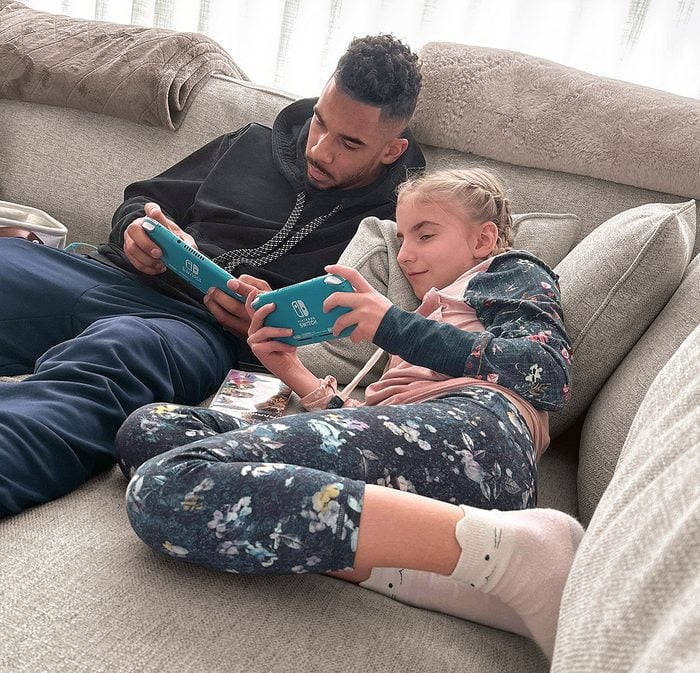
“Cecily is battling brain cancer, and if you met her, you wouldn’t know,” Kane said in an interview with Sportsnet last fall. “She’s just such an incredible human being because while she’s going through all these things, she does so much and uses up so much of her own time to give back.”
Since they met, Kane has had his young friend’s back in more ways than one. After Cecily was taunted and spat on by Los Angeles Kings fans for wearing his jersey at an Oilers game in Los Angeles, he posted about it on Instagram. Many sympathetic fans responded with support by donating to the Stelter fund.
Today Cecily calls herself a brain-cancer survivor and “childhood cancer awareness warrior,” but she is still followed closely by her team at the children’s hospital. When asked for advice on successful fundraising, she emphasizes the importance of generosity. “You don’t get poor by giving,” Cecily says. “Because you always get something back, one way or another.”
Next, read about a 15-year-old who opened an art gallery for youth.

